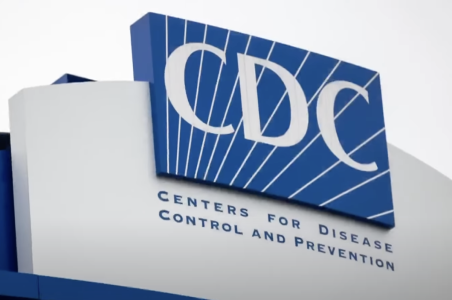Uncounted measles cases? CDC says more may be flying under the radar
By
Veronica E.
- Replies 1
It’s easy to assume that diseases like measles are a thing of the past.
After all, with public health campaigns and decades of progress, many of us believed our children and grandchildren wouldn’t need to worry about such illnesses.
But recent updates from the Centers for Disease Control and Prevention (CDC) suggest Americans may need to pay closer attention—especially when it comes to unreported and undiagnosed cases of measles.
Dr. David Sugerman, senior scientist for the CDC's measles response team, shared his concerns during a recent meeting of the CDC’s Advisory Committee on Immunization Practices.
“We do believe that there's quite a large amount of cases that are not reported and underreported,” he said.

The CDC has already confirmed over 700 measles cases so far this year—making 2025 the second-worst year on record for measles in recent decades.
More than 560 of those cases were reported in Texas.
According to Dr. Sugerman, some families described recovering from measles without ever seeking medical care or testing—meaning many infections may never have made it into the official count.
Cases may be higher than they seem
Three deaths have been linked to the outbreak—two in school-aged children in Texas and one in an unvaccinated adult in New Mexico.
While the CDC typically estimates one to three deaths per 1,000 infections in children, this year’s fatality count suggests more cases are going undetected.
Dr. Edwin Jose Asturias, a committee member, pointed out that the number of reported deaths doesn’t align with the number of documented infections, implying a higher prevalence of the disease than official data shows.
One hotspot is a Mennonite community in West Texas, where underreporting has been a known challenge.
Also read: CDC faces criticism over reduction of key health programs—here’s what you need to know
CDC resources stretched thin
The CDC is facing financial pressure as well.
With COVID-19 funds now depleted, the agency is working to stretch its budget to respond to the outbreaks.
A team of 15 staff members was recently sent to Texas, but Dr. Sugerman noted that the agency is "scraping to find the resources and personnel needed to provide support to Texas and other jurisdictions."
To expand their surveillance efforts, the CDC is considering using wastewater testing in Texas and New Mexico—an approach that proved useful during the pandemic.
This method could help detect signs of measles in communities where cases might otherwise go unnoticed.
Also read: Measles on the rise: 4 deadly myths you need to DEBUNK immediately
Why the stakes are high
If the outbreaks continue beyond January 20, 2026, the United States could lose its status of having eliminated endemic measles transmission.
The CDC is now working closely with state and local health departments to prevent this from happening.
"We will be tracking duration, working closely with our state and local partners to ensure we don't cross the 12-month threshold and preserve our elimination status with ongoing spring and summer travel and congregate events," Sugerman said.
Also read: Measles cases surge: Know the US states reporting infections
Measles and vulnerable populations
Health officials are particularly concerned about pregnant women and infants.
So far, there have been no confirmed stillbirths or miscarriages related to the outbreak, but there have been hospital exposures involving pregnant patients.
One newborn was diagnosed with congenital measles, though the infant has recovered.
For many readers in The GrayVine community, the thought of measles returning is unsettling.
It’s important to stay informed, talk with family members about vaccination status, and be aware of any signs of measles, especially if young grandchildren are in the picture.
Read next: Vacation hotspots on high alert as deadly virus claims more victims

Have you had a conversation about vaccines recently? Do you feel confident about your family’s protection against measles? We’d love to hear your thoughts—share your experiences and questions in the comments below.
After all, with public health campaigns and decades of progress, many of us believed our children and grandchildren wouldn’t need to worry about such illnesses.
But recent updates from the Centers for Disease Control and Prevention (CDC) suggest Americans may need to pay closer attention—especially when it comes to unreported and undiagnosed cases of measles.
Dr. David Sugerman, senior scientist for the CDC's measles response team, shared his concerns during a recent meeting of the CDC’s Advisory Committee on Immunization Practices.
“We do believe that there's quite a large amount of cases that are not reported and underreported,” he said.

The CDC continues to monitor measles outbreaks across the country as concerns grow over underreported cases and resource limitations. Image Source: YouTube / TODAY.
The CDC has already confirmed over 700 measles cases so far this year—making 2025 the second-worst year on record for measles in recent decades.
More than 560 of those cases were reported in Texas.
According to Dr. Sugerman, some families described recovering from measles without ever seeking medical care or testing—meaning many infections may never have made it into the official count.
Cases may be higher than they seem
Three deaths have been linked to the outbreak—two in school-aged children in Texas and one in an unvaccinated adult in New Mexico.
While the CDC typically estimates one to three deaths per 1,000 infections in children, this year’s fatality count suggests more cases are going undetected.
Dr. Edwin Jose Asturias, a committee member, pointed out that the number of reported deaths doesn’t align with the number of documented infections, implying a higher prevalence of the disease than official data shows.
One hotspot is a Mennonite community in West Texas, where underreporting has been a known challenge.
Also read: CDC faces criticism over reduction of key health programs—here’s what you need to know
CDC resources stretched thin
The CDC is facing financial pressure as well.
With COVID-19 funds now depleted, the agency is working to stretch its budget to respond to the outbreaks.
A team of 15 staff members was recently sent to Texas, but Dr. Sugerman noted that the agency is "scraping to find the resources and personnel needed to provide support to Texas and other jurisdictions."
To expand their surveillance efforts, the CDC is considering using wastewater testing in Texas and New Mexico—an approach that proved useful during the pandemic.
This method could help detect signs of measles in communities where cases might otherwise go unnoticed.
Also read: Measles on the rise: 4 deadly myths you need to DEBUNK immediately
Why the stakes are high
If the outbreaks continue beyond January 20, 2026, the United States could lose its status of having eliminated endemic measles transmission.
The CDC is now working closely with state and local health departments to prevent this from happening.
"We will be tracking duration, working closely with our state and local partners to ensure we don't cross the 12-month threshold and preserve our elimination status with ongoing spring and summer travel and congregate events," Sugerman said.
Also read: Measles cases surge: Know the US states reporting infections
Measles and vulnerable populations
Health officials are particularly concerned about pregnant women and infants.
So far, there have been no confirmed stillbirths or miscarriages related to the outbreak, but there have been hospital exposures involving pregnant patients.
One newborn was diagnosed with congenital measles, though the infant has recovered.
For many readers in The GrayVine community, the thought of measles returning is unsettling.
It’s important to stay informed, talk with family members about vaccination status, and be aware of any signs of measles, especially if young grandchildren are in the picture.
Read next: Vacation hotspots on high alert as deadly virus claims more victims
Key Takeaways
- A CDC official has indicated that a substantial number of measles cases are likely underreported, with health authorities struggling to keep up with outbreaks.
- Over 700 measles cases have been confirmed in the US this year, with a significant number occurring in Texas, suggesting underdiagnosis.
- The CDC is scrambling for resources to support Texas and other jurisdictions in response to the measles outbreak due to funding constraints.
- Health officials are concerned about losing the US's status of having eliminated endemic community spread of measles if ongoing outbreaks are not contained.
Have you had a conversation about vaccines recently? Do you feel confident about your family’s protection against measles? We’d love to hear your thoughts—share your experiences and questions in the comments below.






